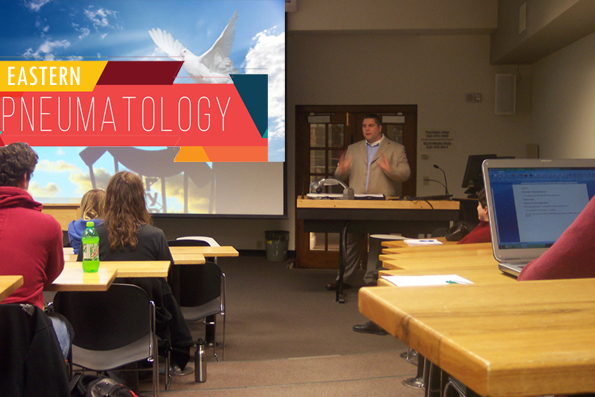The Non-Chalcedonian Eastern Church: Ethiopian

Dony K. Donev, D.Min.: Eastern Pneumotology Lectures
Eastern Orthodoxy can be expressed in one word: theism. The purpose and meaning of life is to become more like God. Deification is pursued by all means of human existence. This quest for divine likeness often includes the typical for the Eastern Church, speculation on the divinity and humanity of Christ, traditions on the doctrine of the Trinity and non-traditional mystical experiences. They appear in the context of both physical and spiritual characteristics in individual and corporate ecclesiastical environment. The role of the Spirit in the process of deification is threefold and involves: creation, re-creation and theism. Eastern Pneumotology follows the graduate process of theism development. The Spirit is involved in the original creation of the world as well as the new-birth experience. His work however, does not end there, but continues throughout the process of personal deification of the believer.
The Non-Chalcedonian Eastern Church: Ethiopian
The Ethiopian Church is not a significance source of information in our study, because the Holy Spirit is not a prime issue there until the fourteenth century.[1] Surprisingly, gifts and fruits of the Spirit are not mentioned. For the Ethiopians, the Holy Spirit the one who teaches us the nature and unity of the Godhead.[2] Similar to the teaching of Hazzaya, the Spirit is the Perfector of the creation.[3] Like the Father and the Son, He blesses the believers and speaks to the church.
The experience of the Spirit for the Ethiopic saints is a vision of the Trinity. In one occasion of such a vision, a man received the elements of the Eucharist from the Trinity. In a similar pattern, nine of the fourteen anaphorae of the Ethiopic church refer to the Holy Spirit changing of the Eucharistic elements into the Body and the Blood of Christ.[4]
[1] Getatchwe Haile, “Religious Controversies and the Growth of Ethiopic Literature in the Fourteenth and Fifteenth Centuries,” Oriens Christianus 65 (1981): 102-36.
[2] G. W. B. Huntingford, “Saints of Medieval Ethiopia,” Abba Salama 10 (1979): 287-89.
[3] Mingana, 148.
[4] O. H. I. Hadji-Burmester, “A Comparative Study of the Form of the Words of Institution and the Epiclesis in the Anaphorae of the Ethiopic Church,” Eastern Churches Quarterly 13:1 (Spring 1959): 41.







